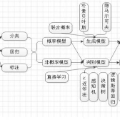Finding relevant and high-quality datasets to train machine learning models is a major bottleneck for practitioners. Furthermore, to address ambitious real-world use-cases there is usually the requirement that the data come labelled with high-quality annotations that can facilitate the training of a supervised model. Manually labelling data with high-quality labels is generally a time-consuming and challenging task and often this turns out to be the bottleneck in a machine learning project. Weak Supervised Learning (WSL) approaches have been developed to alleviate the annotation burden by offering an automatic way of assigning approximate labels (pseudo-labels) to unlabelled data based on heuristics, distant supervision and knowledge bases. We apply probabilistic generative latent variable models (PLVMs), trained on heuristic labelling representations of the original dataset, as an accurate, fast and cost-effective way to generate pseudo-labels. We show that the PLVMs achieve state-of-the-art performance across four datasets. For example, they achieve 22% points higher F1 score than Snorkel in the class-imbalanced Spouse dataset. PLVMs are plug-and-playable and are a drop-in replacement to existing WSL frameworks (e.g. Snorkel) or they can be used as benchmark models for more complicated algorithms, giving practitioners a compelling accuracy boost.
翻译:寻找相关且高质量的数据集来训练机器学习模型是从业者面临的主要瓶颈。此外,为了应对野心勃勃的实际应用场景,通常要求数据附带高质量的注释,以便于训练有监督的模型。手动标注高质量标签通常是一项耗时且具有挑战性的任务,往往会成为机器学习项目的瓶颈。弱监督学习(WSL)方法已经被开发出来,通过基于启发式、远程监督和知识库的方法,为未标记数据自动分配近似标签(伪标签),以减轻注释负担。我们应用基于启发式标注表示的概率生成潜变量模型(PLVM)作为一种准确、快速和经济的生成伪标签的方法。我们展示PLVM在四个数据集上实现了最先进的性能。例如,它们的F1得分比Snorkel在类别不平衡的Spouse数据集中高22个百分点。PLVM是即插即用的,可以作为现有WSL框架(例如Snorkel)的替代品,也可以作为更复杂算法的基准模型,为从业者提供令人信服的准确性提升。




